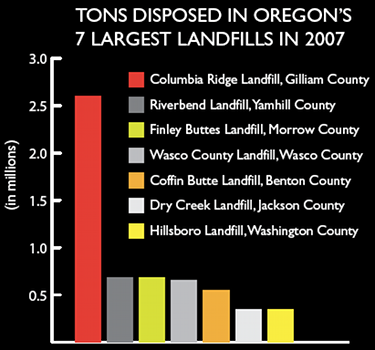When the unemployment figures came out in March, 35 Oregon counties were stricken by double-digit rates. But in rural Gilliam County, where the population is just 1,868, unemployment was the fifth lowest in the state: 9.8%
 GILLIAM COUNTY When the unemployment figures came out in March, 35 Oregon counties were stricken by double-digit rates. But in rural Gilliam County, where the population is just 1,868, unemployment was the fifth lowest in the state: 9.8%. It had the lowest rate the month before.
GILLIAM COUNTY When the unemployment figures came out in March, 35 Oregon counties were stricken by double-digit rates. But in rural Gilliam County, where the population is just 1,868, unemployment was the fifth lowest in the state: 9.8%. It had the lowest rate the month before.
Every year since 1990, which is as long as the data is available, Gilliam has had one of the lowest unemployment rates in the state.
The diversity of Gilliam’s economy is the reason why, says state senator Ted Ferrioli. Gilliam has strong wheat and cattle sales, a modestly growing tourism sector, and new wind farm developments. The county has a port and easy I-5 access, and the government is a source of stability as the second-largest employer.
And then there’s the dump.
Twenty years ago, the county persuaded Waste Management to build a dump in Arlington to process all of the solid waste from the Portland and Seattle metro areas, says Laura Pryor, who was county judge in Gilliam from 1987 to 2006. The solid waste dump is the largest in the state by far.
Waste Management also owns a chemical waste landfill in Arlington, which is the only hazardous waste disposal site in the Northwest. That dump has been there since the mid-1970s.
Today, the two facilities employ 150 people. Not all of those jobs are held by members of Gilliam’s 1,068-strong workforce, but the dump is the county’s largest employer. About another 70 locals are employed in trucking the waste, meaning the landfills directly and indirectly employ about 20% of Gilliam’s workforce.
The dumps have been stable employers as the county’s farming operations constricted, says Pryor.
Bryan Wilkins, the Arlington district manager at Waste Management, says the company has no plans for layoffs. But Gilliam could be in trouble about nine years from now, when Waste Management’s current contracts are up for renewal.
In 1990, Arlington had the only regulation-compliant solid-waste dump in the region. Now, Gilliam is surrounded by three facilities that will be fighting for Portland and Seattle’s trash, and it’s not looking good.
The fate of the dump may hinge on a barge dock that the Army Corps of Engineers says infringes on a treaty-protected tribal fishing site. Without the disputed dock, Gilliam is only accessible by rail and truck; neighboring counties have rail, truck and barge access.
“The battle we’re in with the Corps of Engineers and the Native Americans right now will tell the tale whether we have that third piece,” says Pryor. “If not, we won’t be on the same playing field.”


